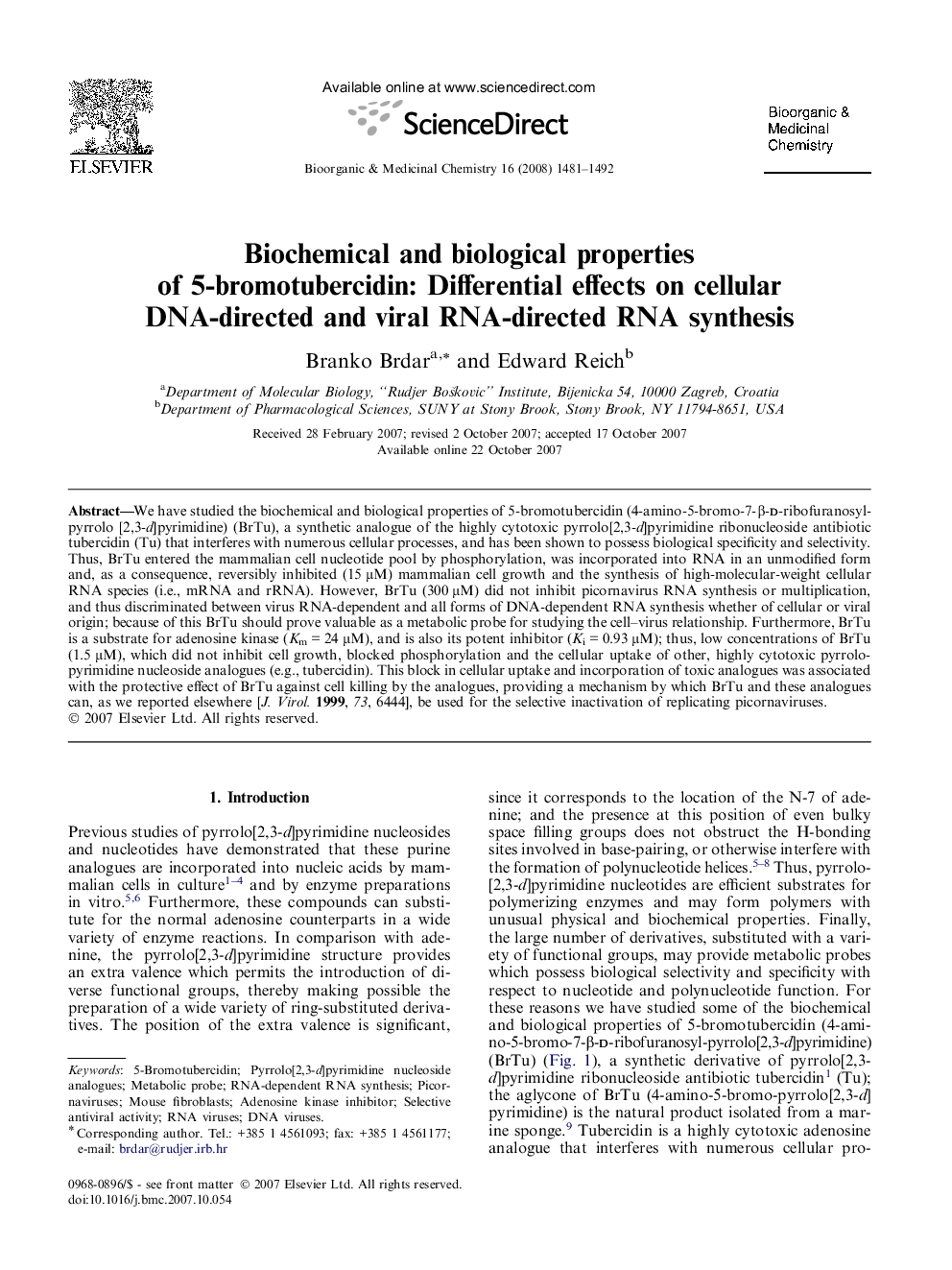| کد مقاله | کد نشریه | سال انتشار | مقاله انگلیسی | نسخه تمام متن |
|---|---|---|---|---|
| 1356861 | 981163 | 2008 | 12 صفحه PDF | دانلود رایگان |

We have studied the biochemical and biological properties of 5-bromotubercidin (4-amino-5-bromo-7-β-d-ribofuranosyl-pyrrolo [2,3-d]pyrimidine) (BrTu), a synthetic analogue of the highly cytotoxic pyrrolo[2,3-d]pyrimidine ribonucleoside antibiotic tubercidin (Tu) that interferes with numerous cellular processes, and has been shown to possess biological specificity and selectivity. Thus, BrTu entered the mammalian cell nucleotide pool by phosphorylation, was incorporated into RNA in an unmodified form and, as a consequence, reversibly inhibited (15 μM) mammalian cell growth and the synthesis of high-molecular-weight cellular RNA species (i.e., mRNA and rRNA). However, BrTu (300 μM) did not inhibit picornavirus RNA synthesis or multiplication, and thus discriminated between virus RNA-dependent and all forms of DNA-dependent RNA synthesis whether of cellular or viral origin; because of this BrTu should prove valuable as a metabolic probe for studying the cell–virus relationship. Furthermore, BrTu is a substrate for adenosine kinase (Km = 24 μM), and is also its potent inhibitor (Ki = 0.93 μM); thus, low concentrations of BrTu (1.5 μM), which did not inhibit cell growth, blocked phosphorylation and the cellular uptake of other, highly cytotoxic pyrrolo-pyrimidine nucleoside analogues (e.g., tubercidin). This block in cellular uptake and incorporation of toxic analogues was associated with the protective effect of BrTu against cell killing by the analogues, providing a mechanism by which BrTu and these analogues can, as we reported elsewhere [J. Virol.1999, 73, 6444], be used for the selective inactivation of replicating picornaviruses.
The growth and RNA synthesis of mengovirus were completely resistant to concentrations of 5-bromotubercidin which strongly inhibited the growth of the host cell, of DNA virus vaccinia and of the DNA-dependent RNA synthesis of uninfected cells.Figure optionsDownload as PowerPoint slide
Journal: Bioorganic & Medicinal Chemistry - Volume 16, Issue 3, 1 February 2008, Pages 1481–1492